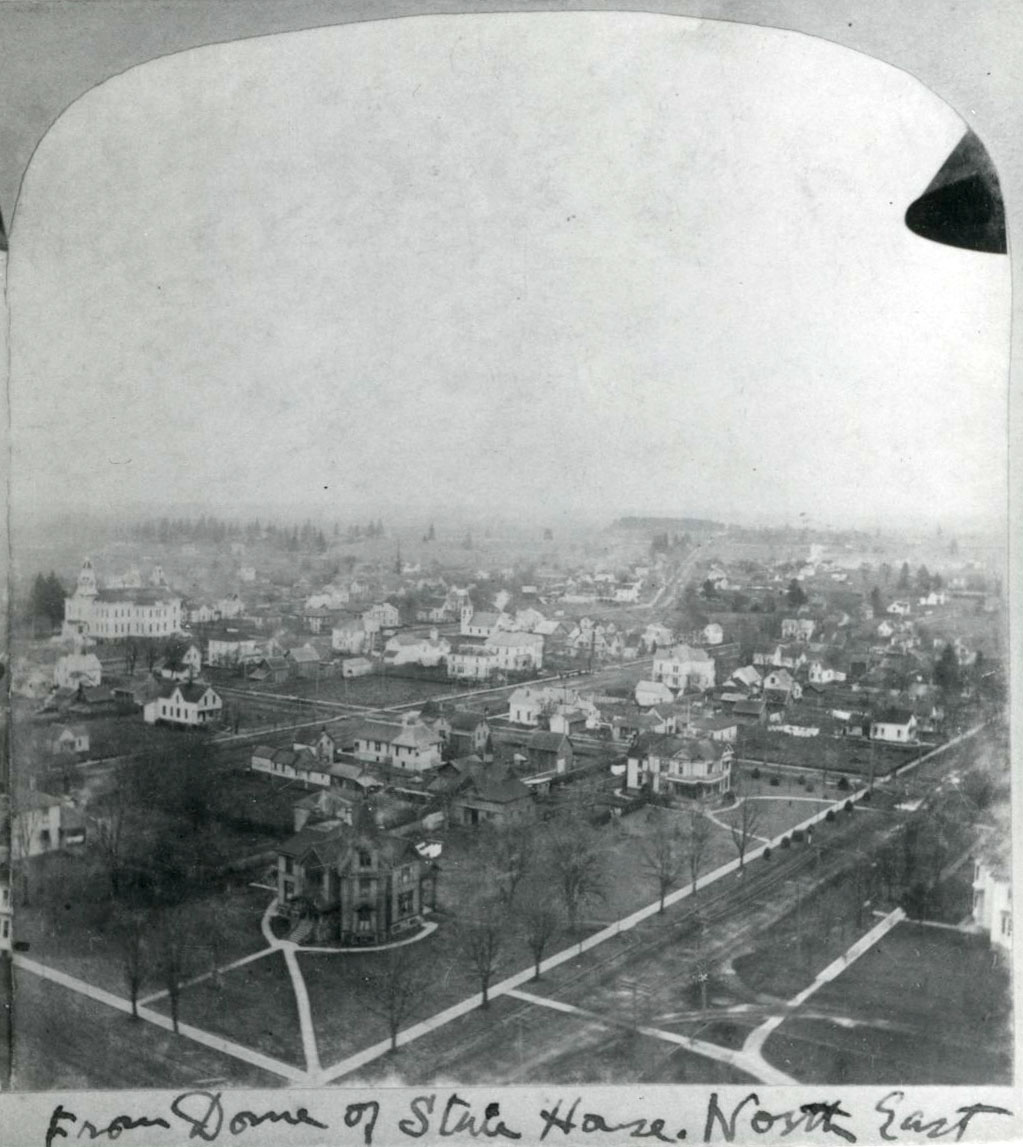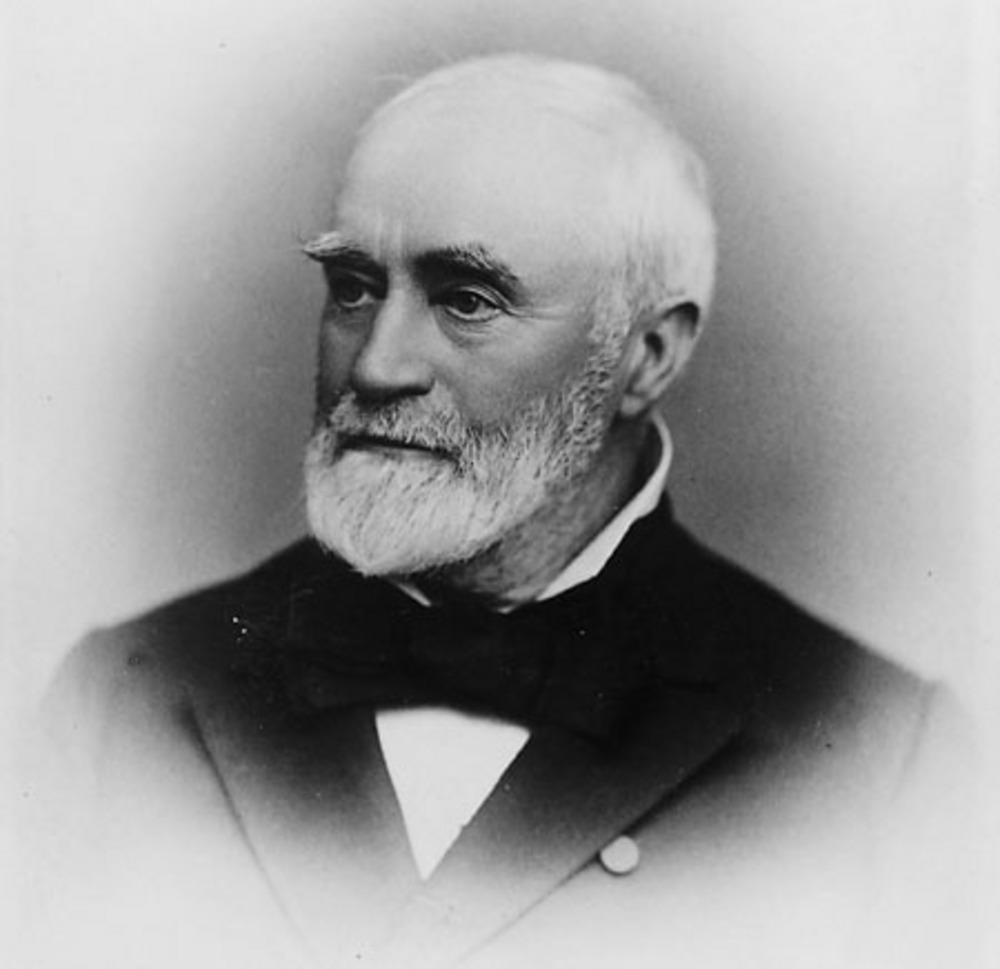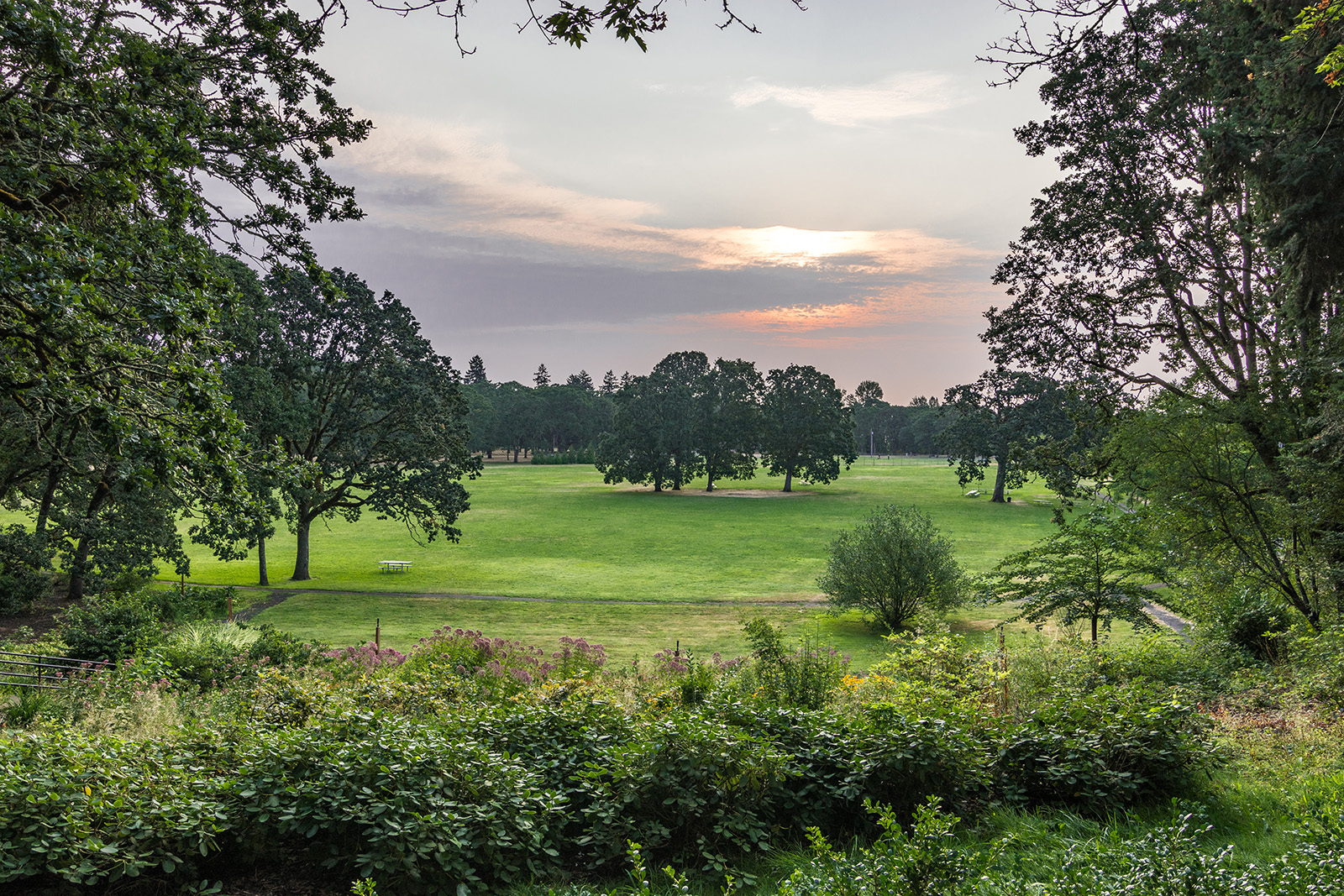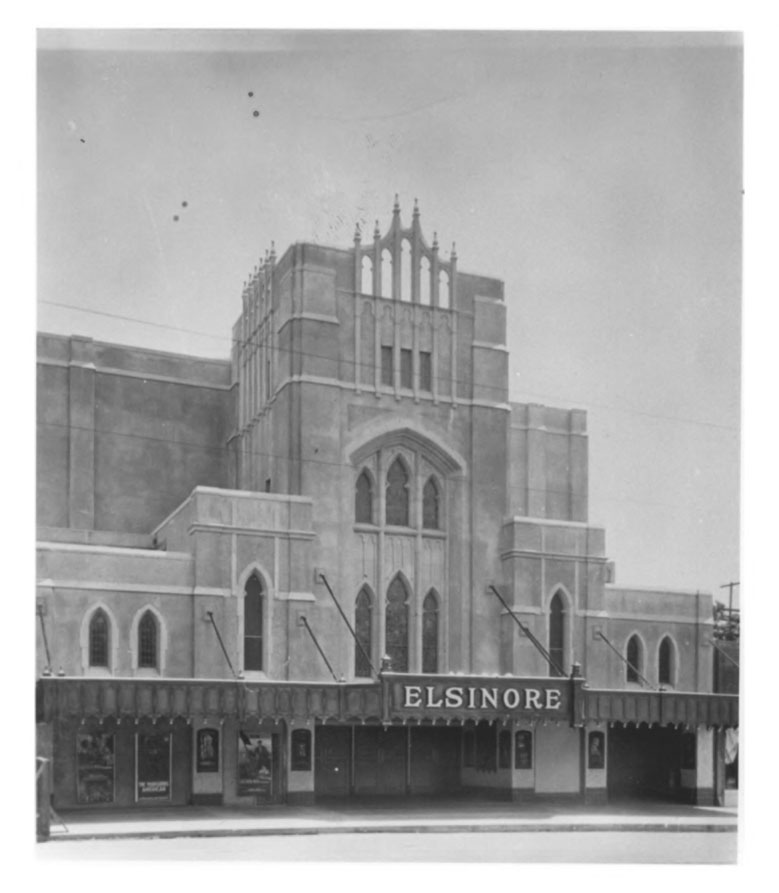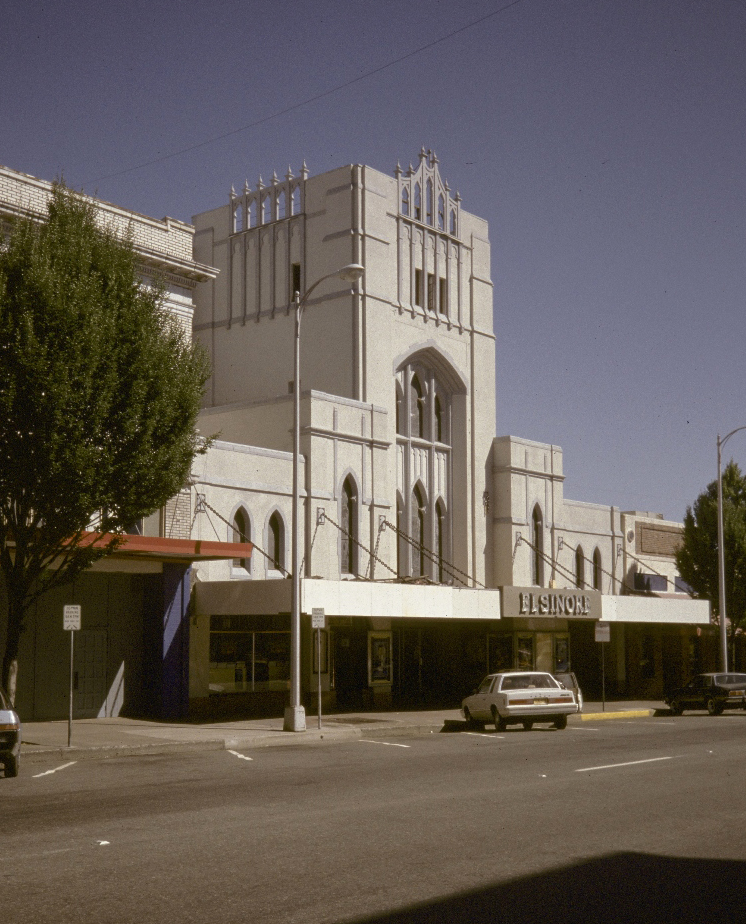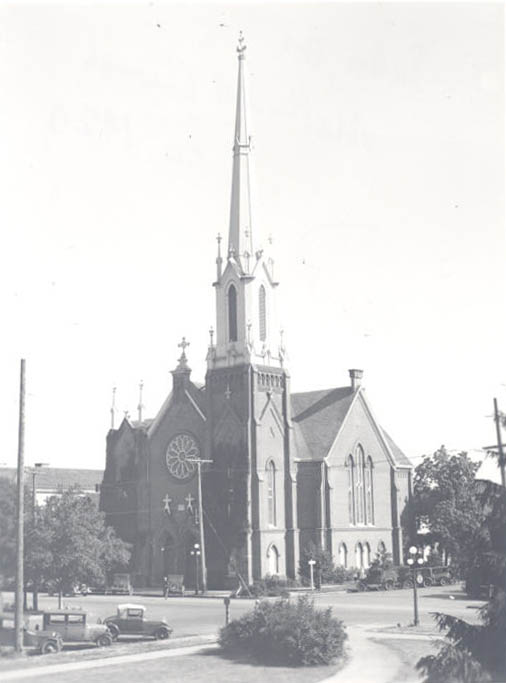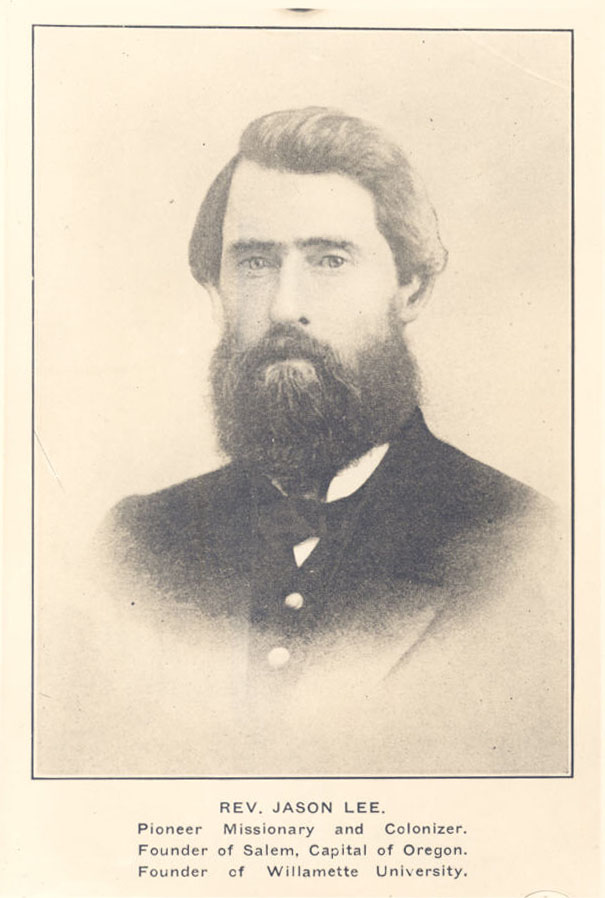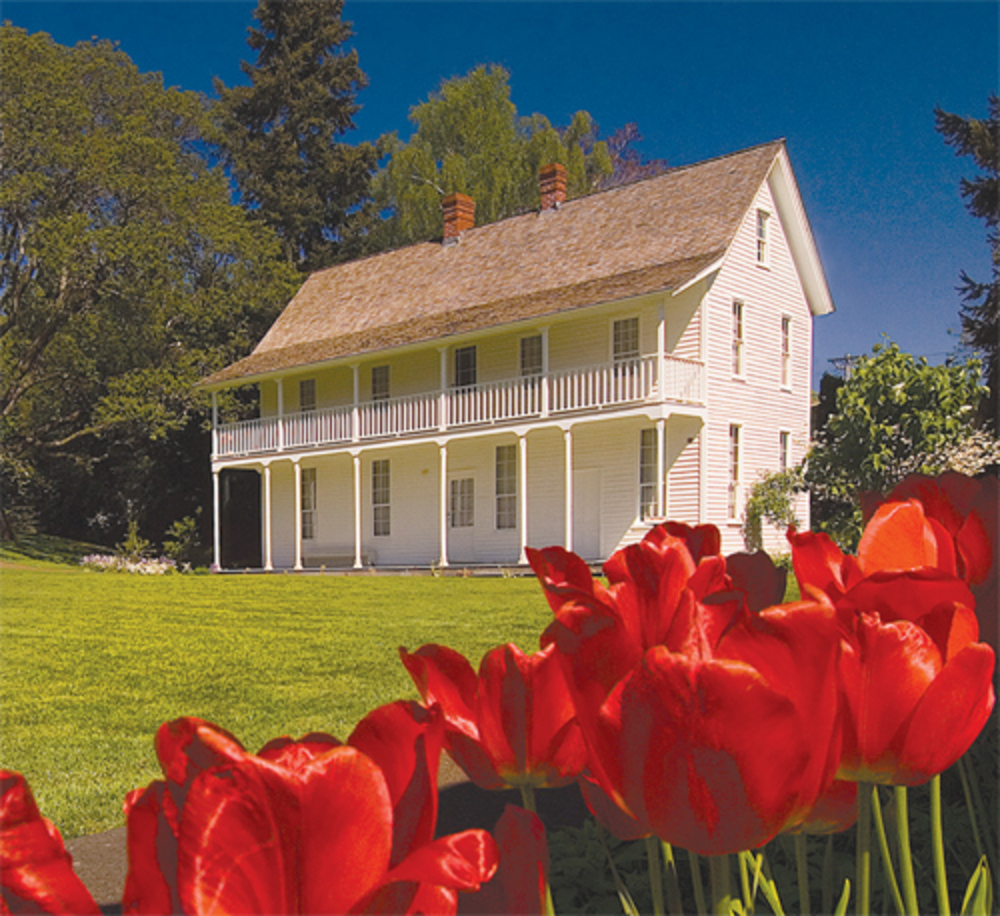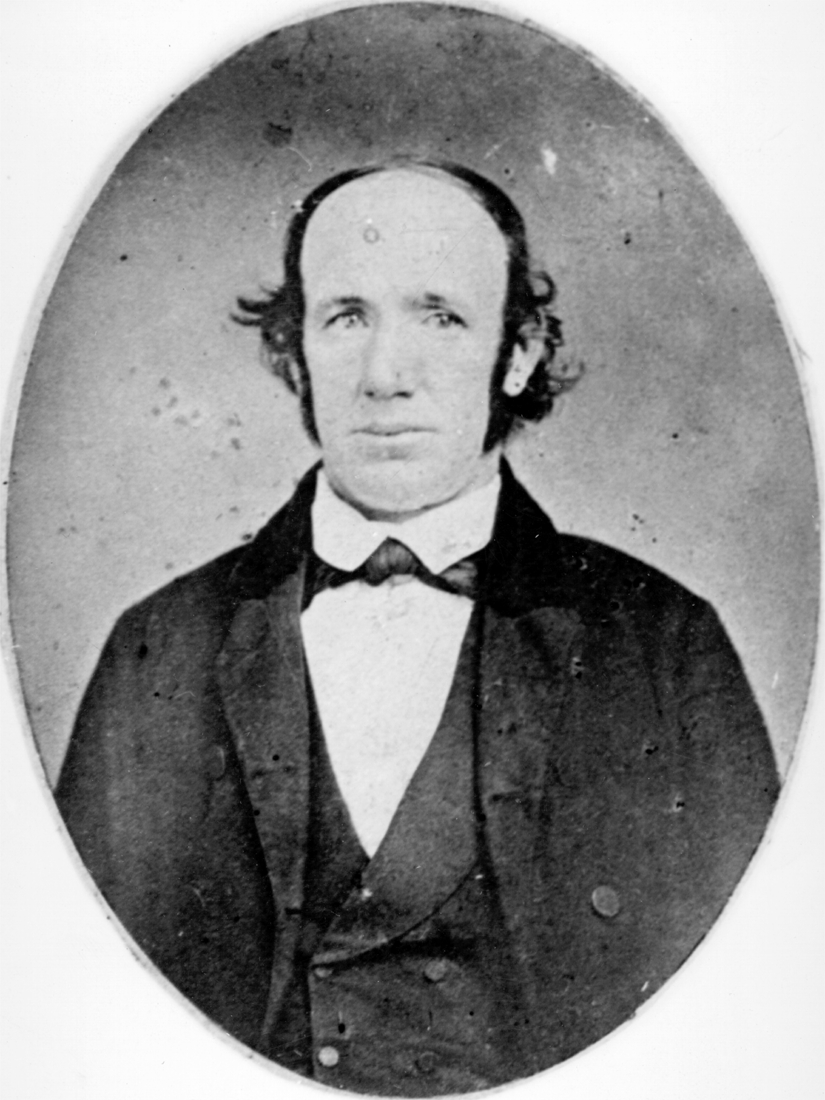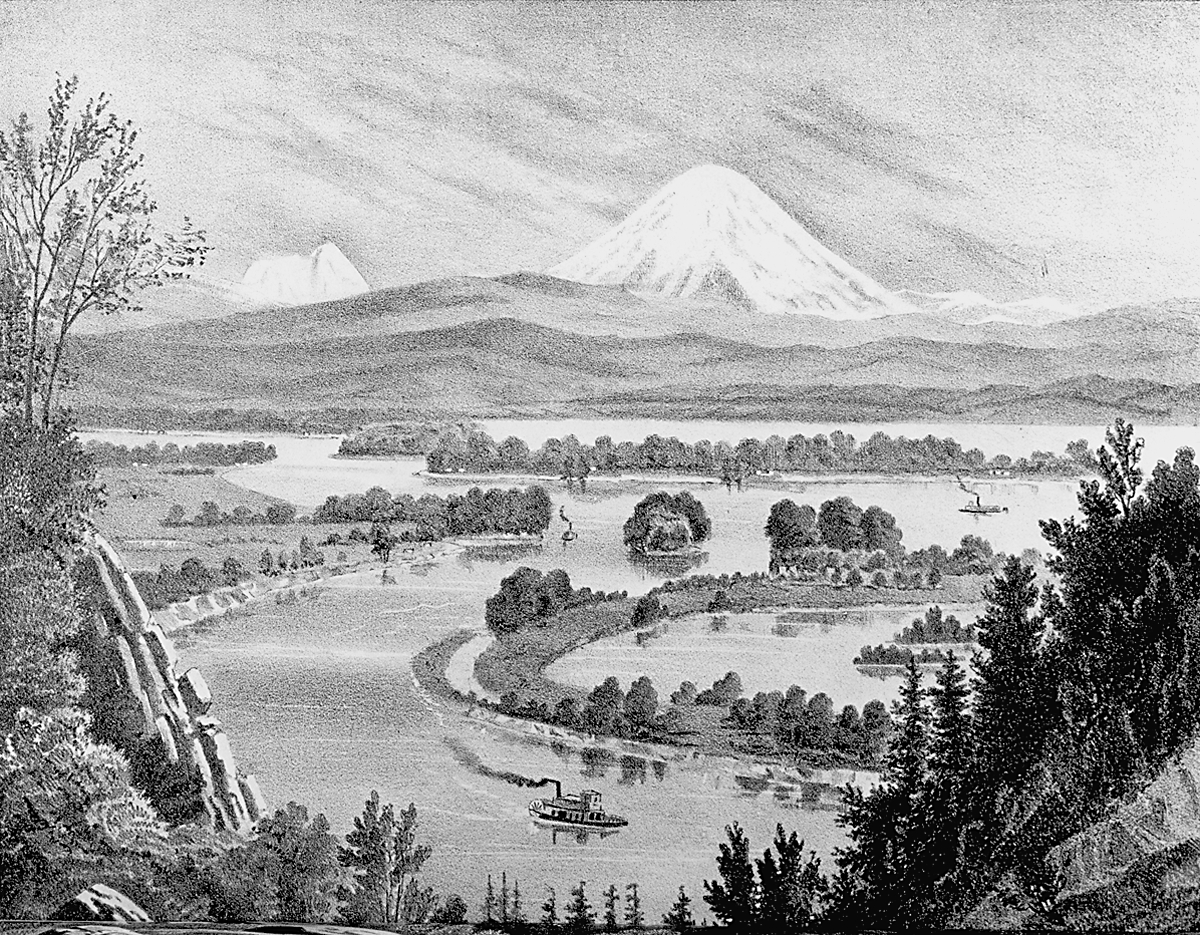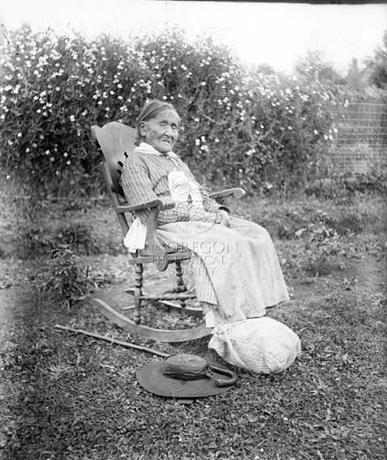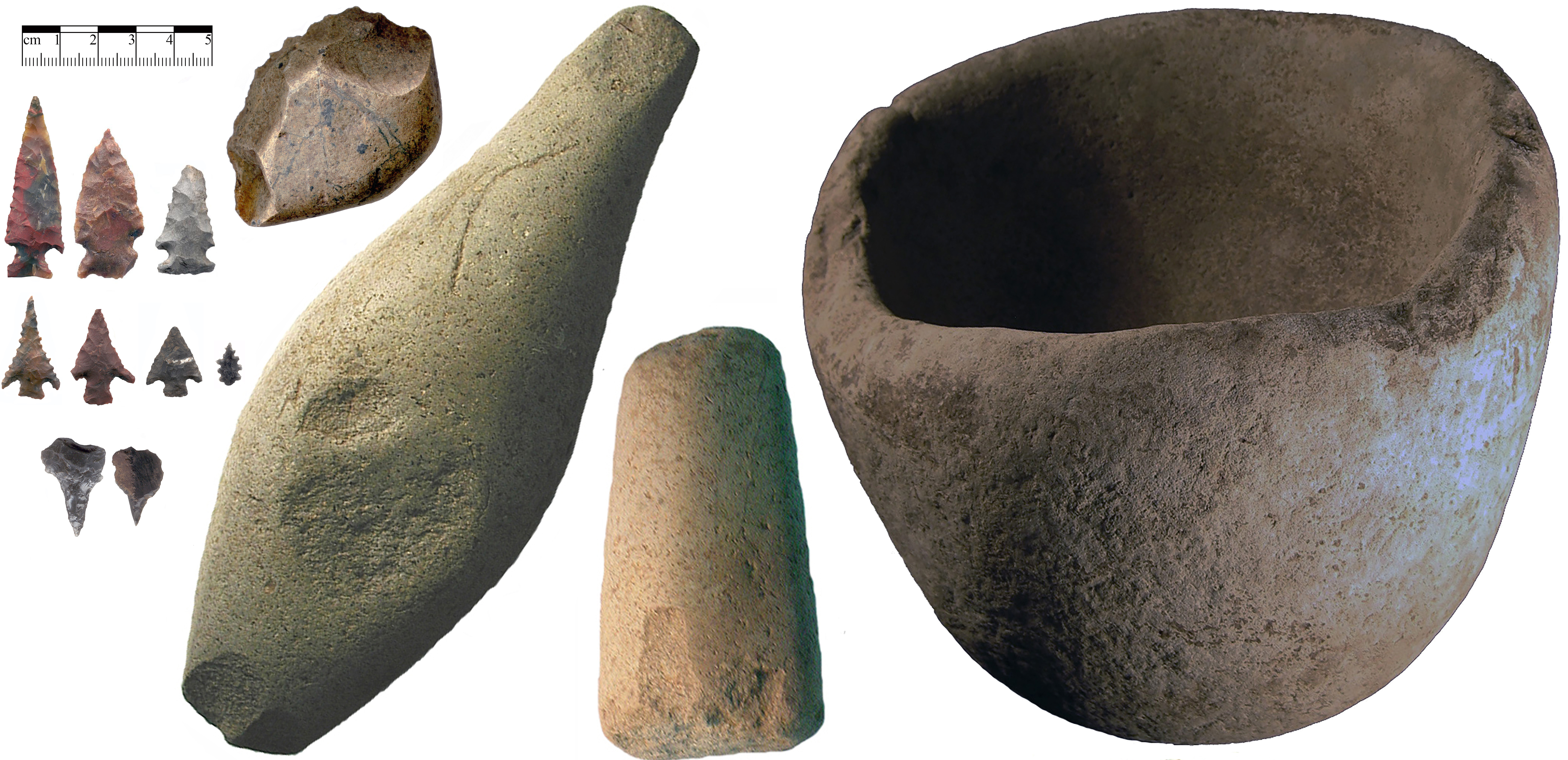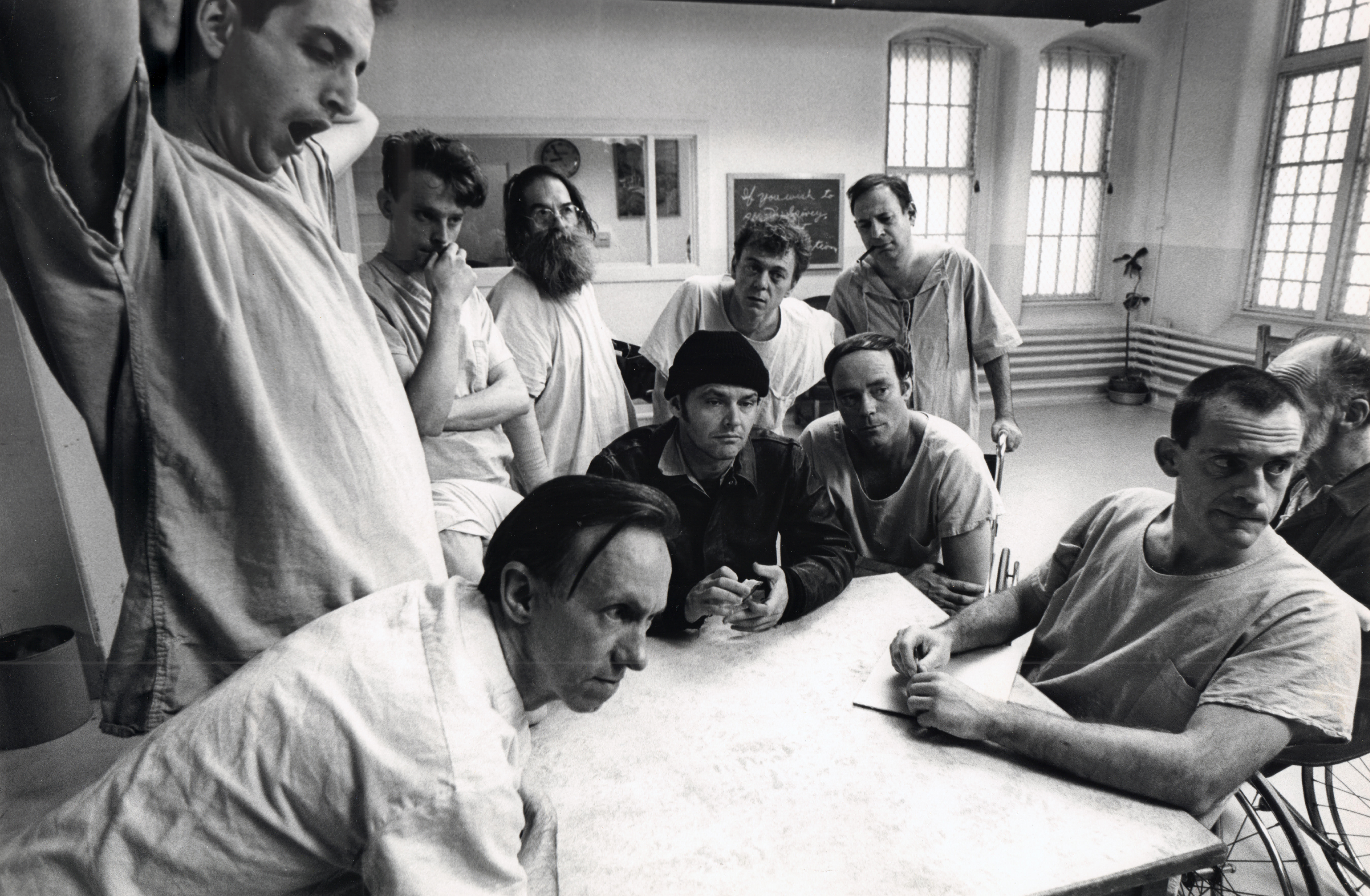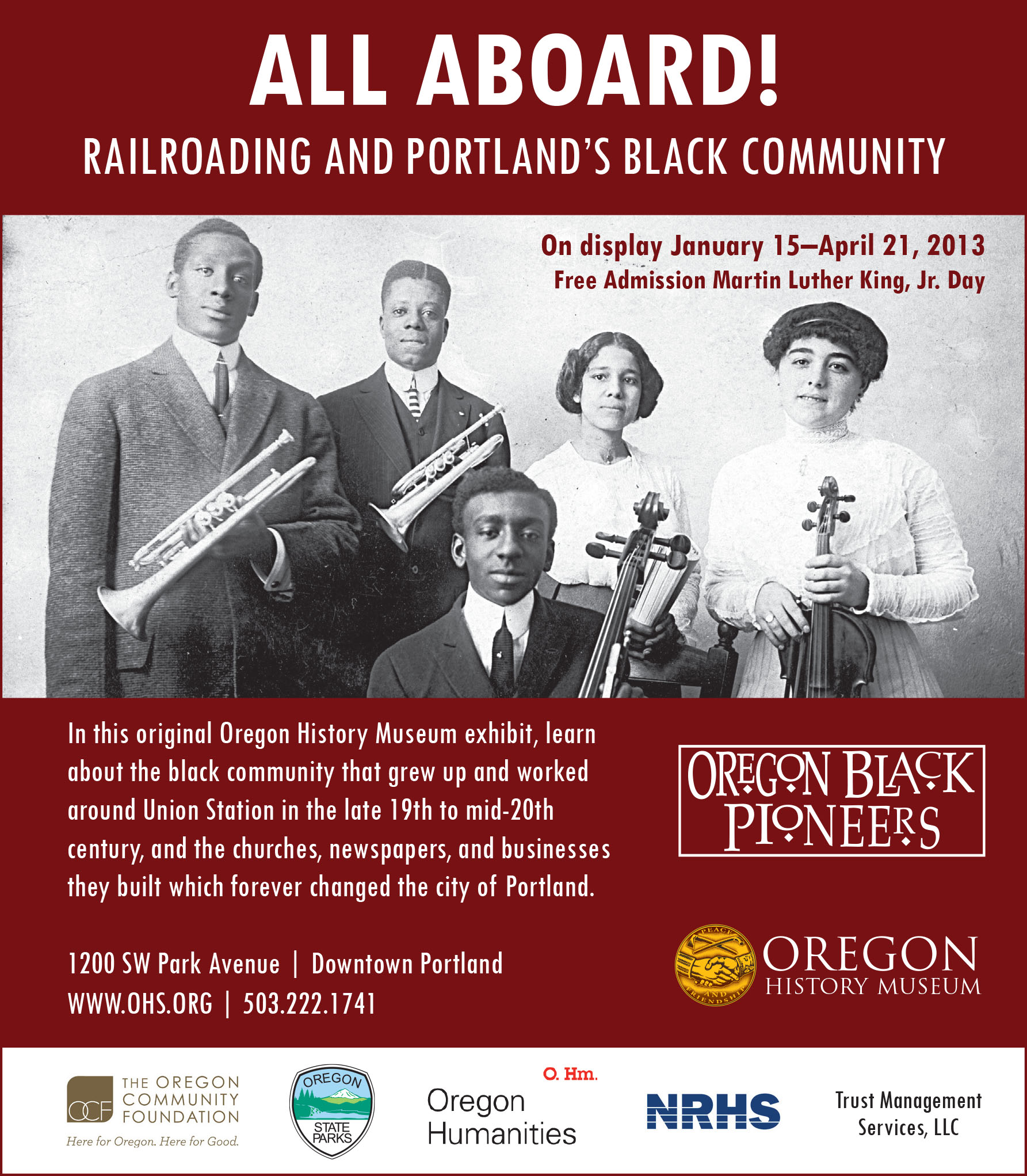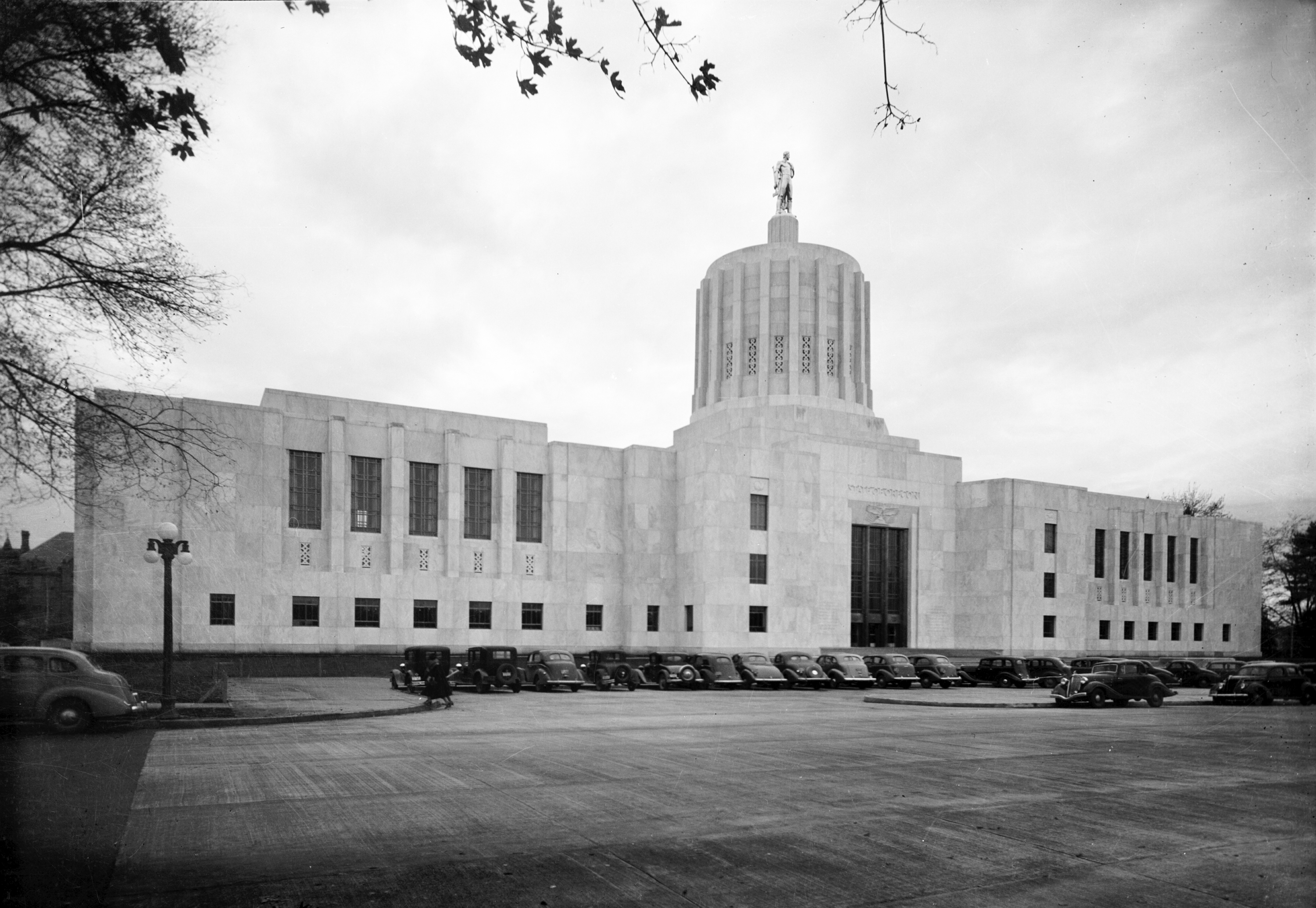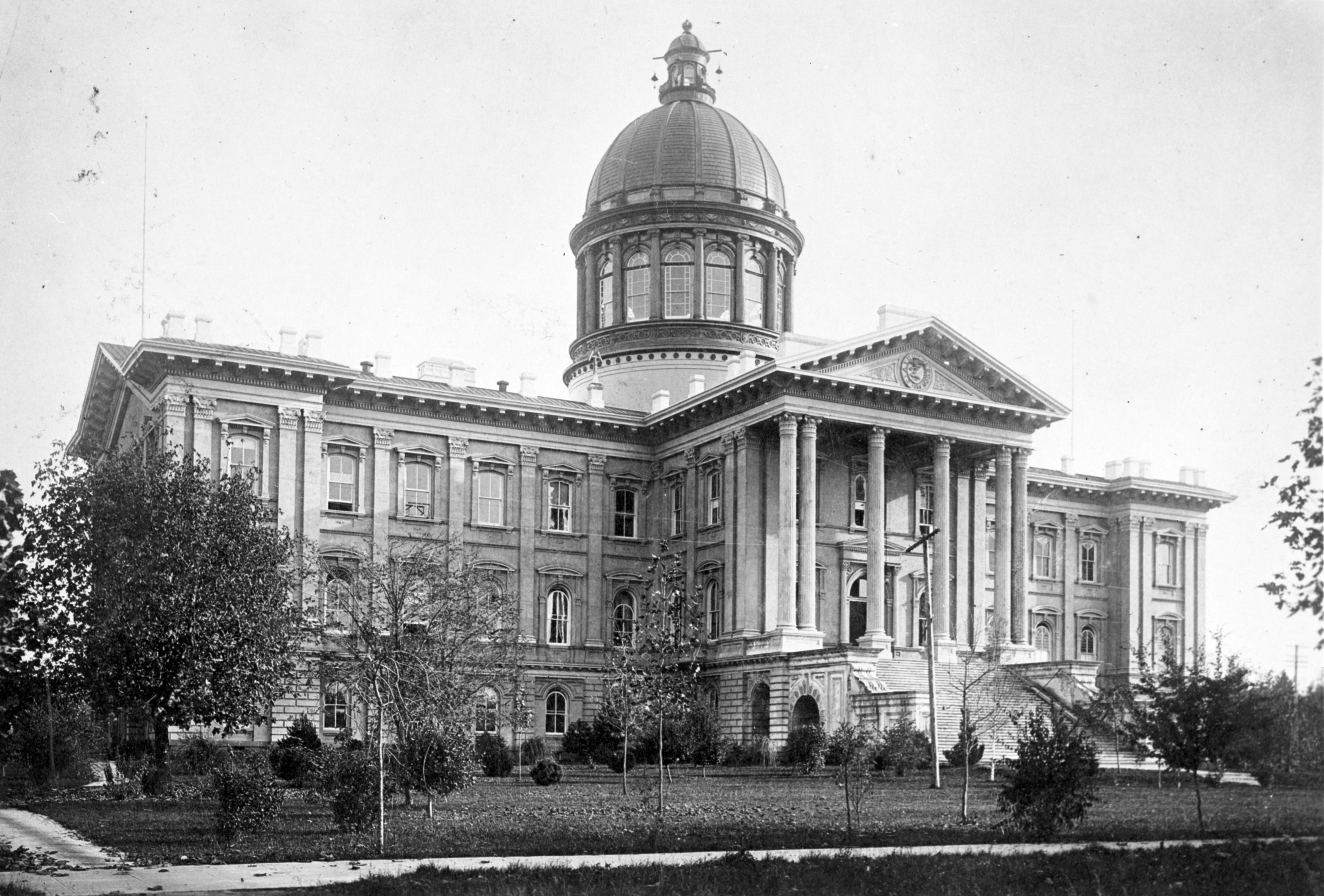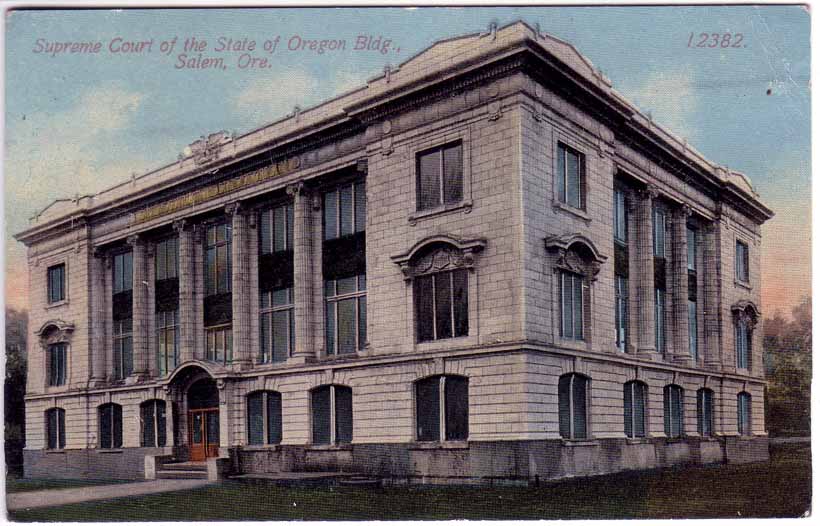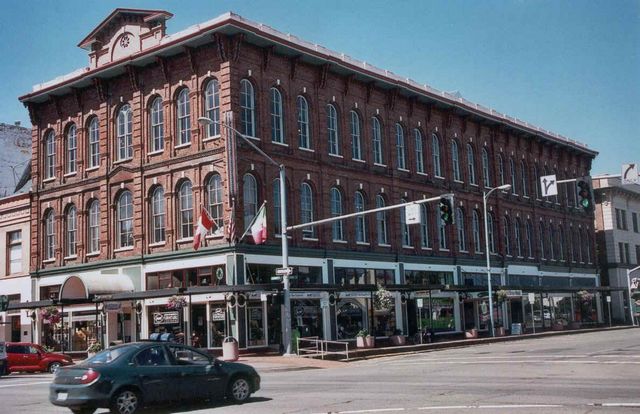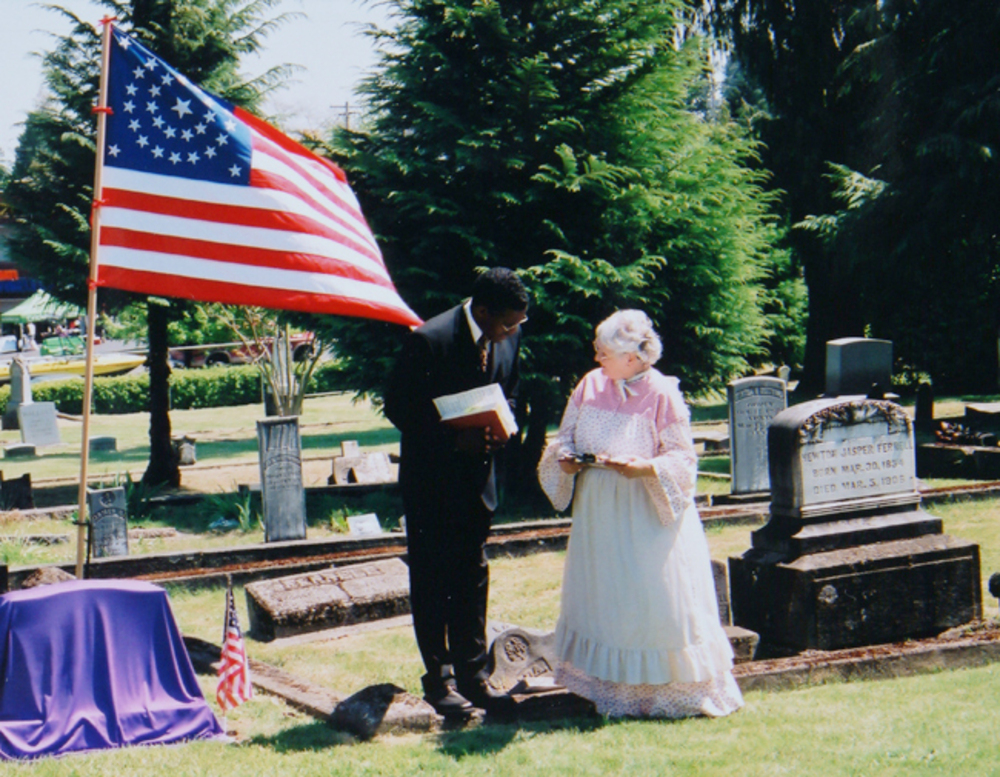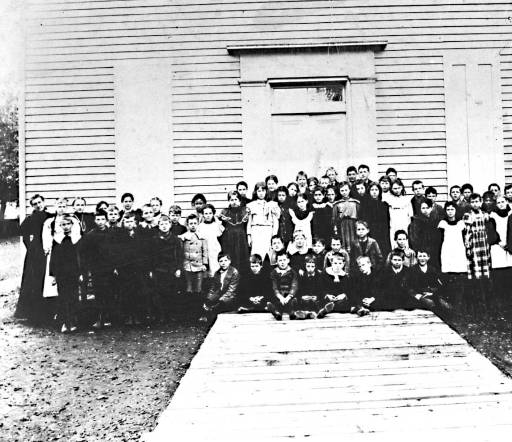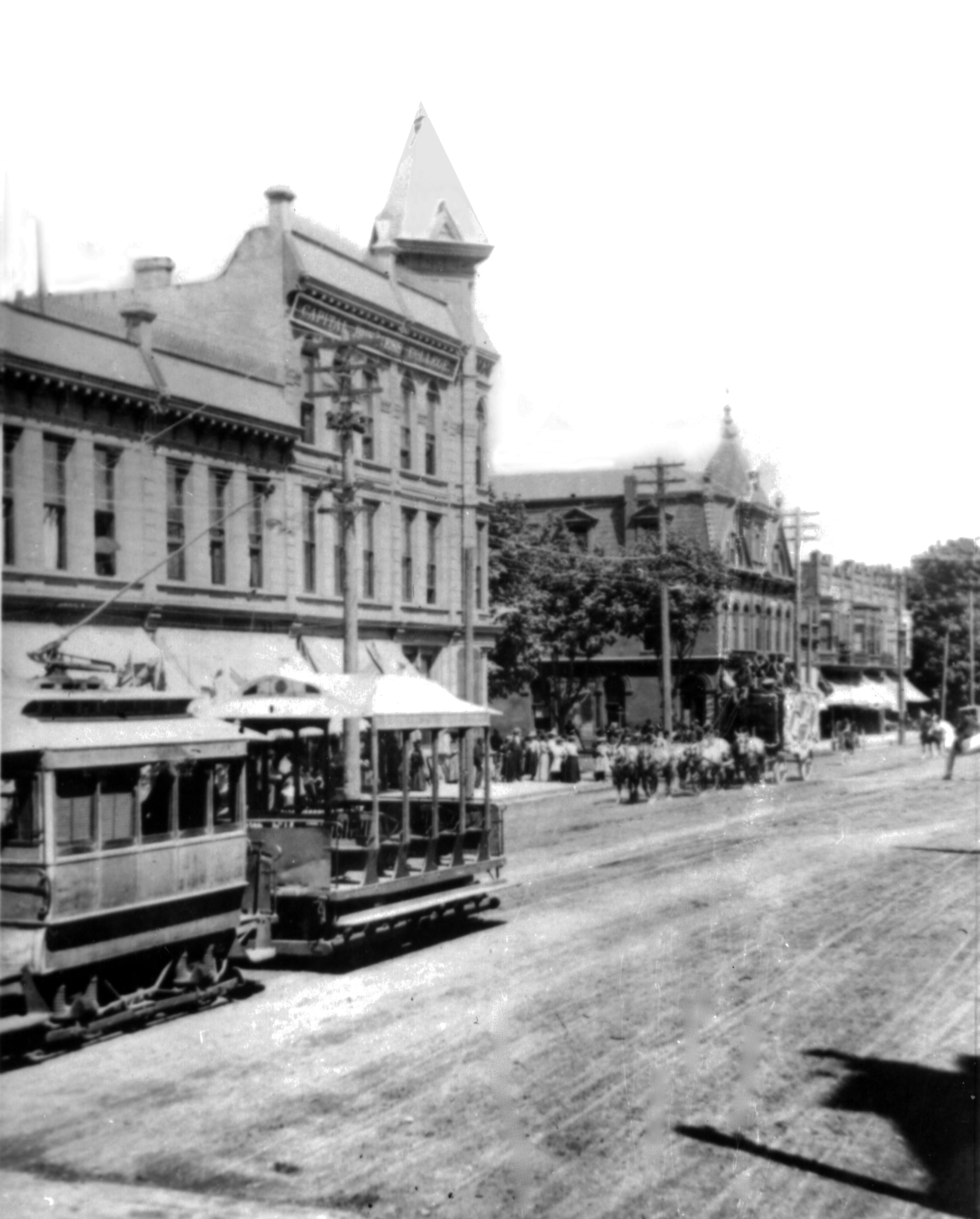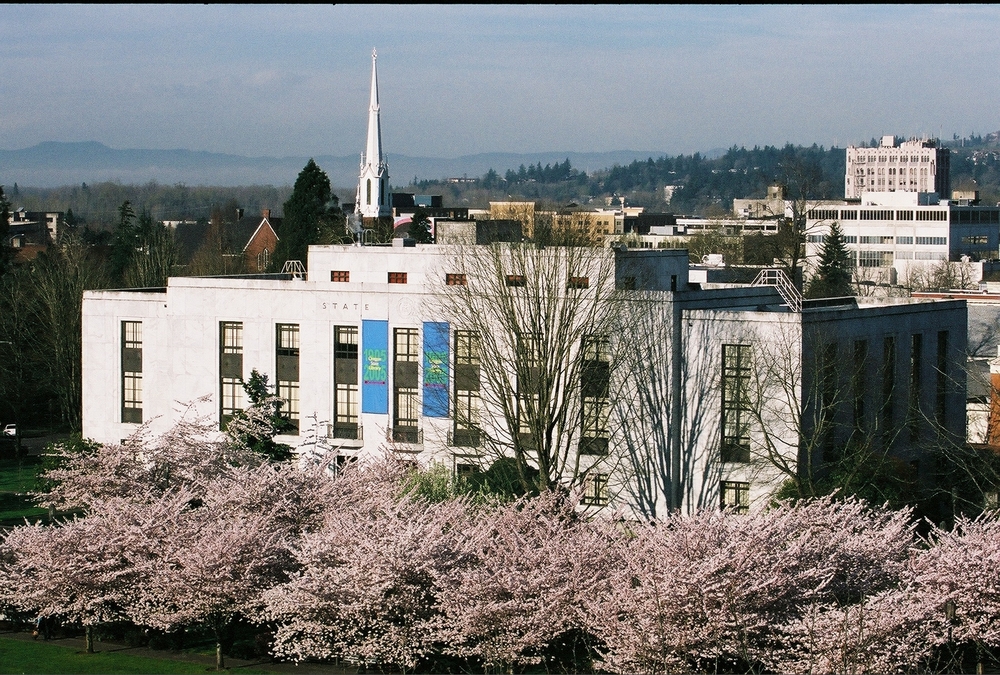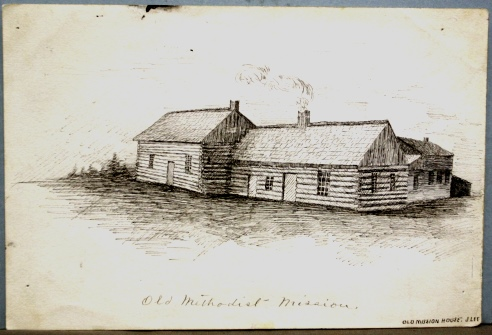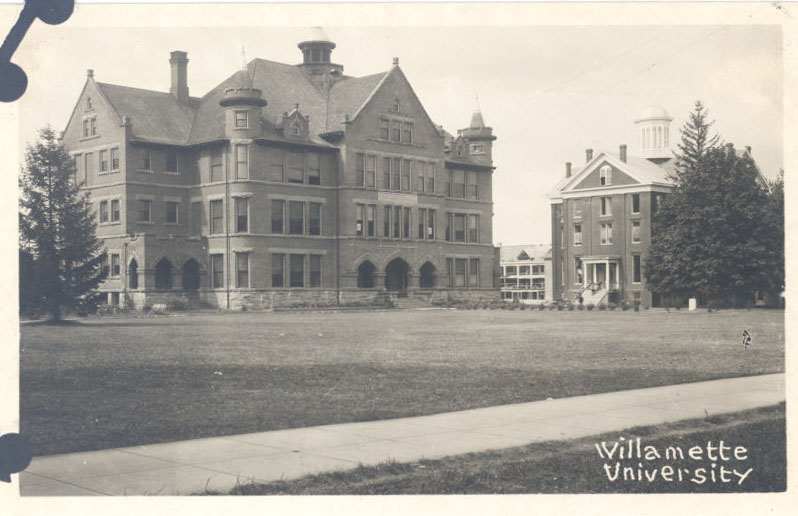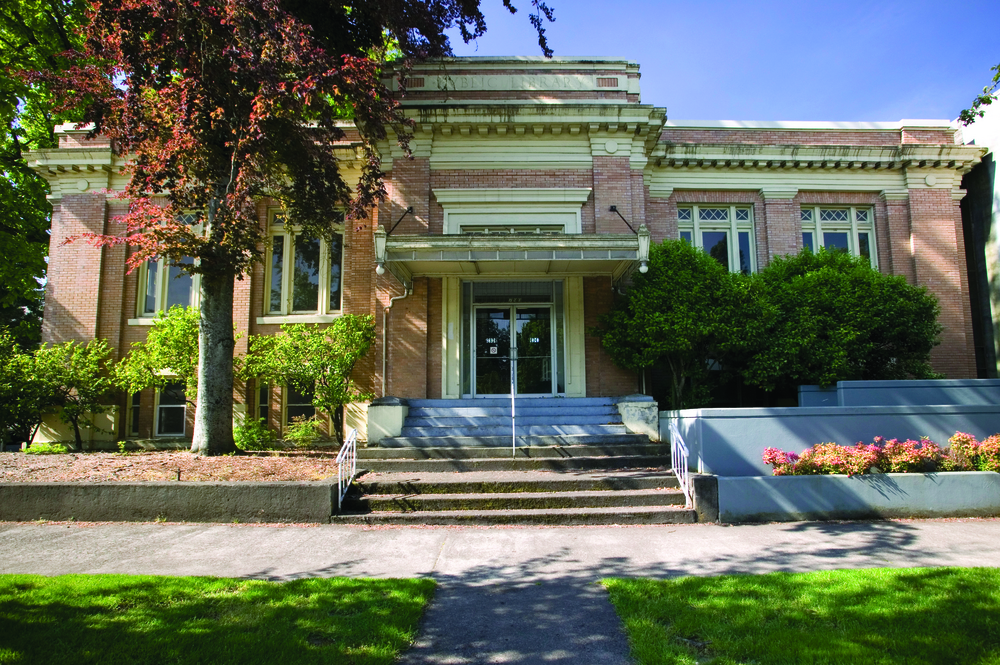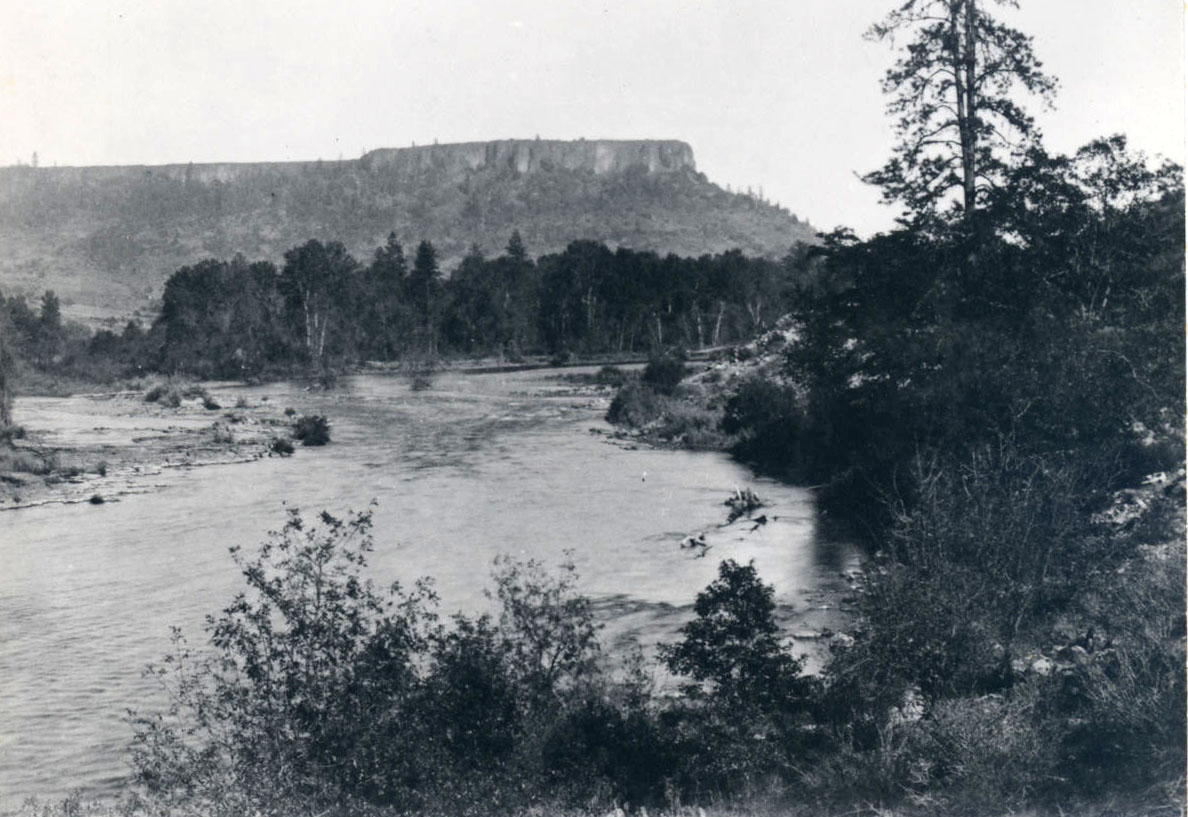Salem, the capital of Oregon, is located at a crossroads of trade and travel on former prairie lands along the Willamette River. The city was designated the seat of Marion County in 1849 and the territorial capital in 1851-1852. Incorporated in 1857, Salem served as the de facto state capital beginning in 1859 and, by popular vote, became the official capital in 1864. It is on the site of one of the earliest American settlements in the Oregon Country, a Methodist mission established by Jason Lee in 1841 near the Kalapuyan village of Tchimikiti. Lee established a town near the mission, which he named Chemeketa. In 1846, William Willson renamed it Salem, from the Arabic word salam, which means peace.
To the south of the city are the Salem Hills, originally called the Red Hills, a midvalley geologic formation of ancient Jory soils. To the north is Lake Labish, a marshland drained in the early twentieth century to create agricultural land, and to the east farms and small towns meet the foothills of the Cascade Range. Salem’s western boundary ended at the Willamette River until 1949, when West Salem was incorporated into the city. The city is in two counties, Marion to the east of the Willamette River and Polk to the west.
Salem is drained by Mill Creek (Chemeketa Creek) and Pringle Creek (Harbor Creek), tributaries of the Willamette River. During the nineteenth century, the two creeks were joined by mill races to operate sawmills, grist mills, and woolen mills. Salem gets its water from the North Fork of the Santiam River, which was joined to Mill Creek by the Salem Ditch in 1857 to create better mill-race flows and provide clean drinking water.
Salem vies with Eugene as the second most populous city in Oregon (after Portland). The city’s population was 1,137 in 1870, and it has doubled or tripled every decade since, with the most dramatic change occurring between 1870 and 1880, when the population grew by 122 percent. In 2020, the city had 175,535 residents, 23 percent of them Latinx.
Early Resettlement
In 1841, Lee moved his mission from French Prairie to Chemeketa, where he built a sawmill and a grist mill. His house, the first permanent non-Native residence in the region, was built in 1842. The Great Reinforcement of Methodist missionary families, recruited by Jason Lee, arrived on the Lausanne in 1840. Over the next three years, more than a thousand people traveled the Oregon Trail to the Willamette Valley, and many claimed land near the mission. By 1844, Lee’s mission school was closed and the property transferred to William Willson, who platted the town.
Salem had grown enough by 1851 to be named the territorial capital. The city’s influence on territorial politics increased when Asahel Bush and Samuel R. Thurston moved their newspaper, the Oregon Statesman, there in 1853. Bush used the publication to argue policy with Thomas Dryer of the Whig/Republican Oregonian in Portland, a public battle of wits that became known as Oregon-Style Journalism. The newspaper merged with the Capital Journal in 1980 to become the Statesman Journal.
The Salem area was opened to further resettlement when the U.S. government removed the Kalapuyans to the Grand Ronde Reservation in 1856. The only documented Native-white conflict in the area had occurred in the Salem Hills at Battle Creek in 1846, when the Oregon Rangers, a volunteer militia, attacked a group of Klamaths and Wascoes because they had stolen a horse. The militia eventually apologized for their overreaction.
Economy
The largest employer in Salem is the Oregon state government, and the State Capitol Building and Mall are the most prominent features of the city. Town founders William and Chloe Willson donated land for the territorial capitol building, and construction began in 1854. The project stumbled when the seat of government moved to Corvallis in 1855 for one session, but construction continued and the legislature moved in by December 1855, a little more than a week before the structure burned down. In 1935, fire destroyed a second capitol, built in 1876-1893. The current capitol was built in 1938. The Oregon State Hospital and Oregon State Penitentiary are in Salem, along with the Oregon Department of Corrections and the Santiam Correctional Institution.
Agriculture and ranching were Salem’s earliest industries. In 1847, nurseryman Henderson Seth Lewelling arrived in the Willamette Valley with hundreds of seedlings, many of them Royal Anne cherry trees. Orchardists were so successful with the crop that Salem was named the Cherry City of the World in 1907, when the Pacific Coast Association of Nurserymen judged that it had “the greatest and finest display of cherries known in history.” Salem held an annual Cherry City Festival from 1903 to 1967, and berries remain an important crop in the area. Agriculture still dominates the Salem economy, and NORPAC, the state’s largest vegetable-and-fruit-canning cooperative, has been in business in the city since 1924.
John Minto, Joseph Watt, and Daniel Waldo opened the Willamette Woolen Mills in Salem in 1857, and the Oregon Wool Growers Association was formed in 1865, “the first permanent organization of wool men in Oregon.” The Thomas Kay Woolen Mills opened in 1889 and was soon the second largest woolen mill on the West Coast. After the mill closed in 1962, it was repurposed as the Mission Mill Museum.
By 1866, the Capital Lumbering Company had built a major sawmill in Salem, and Oregon Pulp and Paper built a plant on the Willamette River in 1919. When Boise Cascade purchased both facilities in 1962, production operations included settling ponds for effluents across the Willamette Slough on Minto-Brown Island. Environmental concerns, including air pollution and water quality, caused a strain on profits, and the company ended pulp production in 1982 and paper production in 2007. The City of Salem reclaimed the land and opened it to condominiums and a riverfront park. On Minto-Brown Island, the former settling ponds are now an ecological preserve managed by the Audubon Society.
Major businesses in Salem include Amazon, Garmen, Kettle Foods, Don Pancho, NORPAC, Kerr Concentrates, Henningsen Cold Storage, Freres Lumber, May Trucking, and the Meier and Frank Department Store (sold to the May Department Stores in 1966). Salem has three sister cities: Tamil Nodu, India; Simferopol, Ukraine; and Växjö, Sweden.
Education
Salem is a center of research and education for the Willamette Valley. The Oregon State Archives and Oregon State Library are near the capitol, as is Willamette University, the oldest four-year university west of the Mississippi. Chemeketa Community College opened in 1970, and Corban University moved to Salem in 1969.
Forty thousand students attend schools in the Salem-Keizer School District (Keizer is a city of about 36,000 people north of Salem). Chemawa Indian School, sponsored by the Bureau of Indian Affairs, moved from Forest Grove to Salem in 1885; and Blanchet Academy, a Catholic high school, opened in 1995. The Oregon School for the Deaf has operated in the city since 1870.
Tourism, Recreation, and Culture
Salem has several musical groups, including the Salem Chamber Orchestra, the Salem Youth Symphony Association, and the Salem Philharmonia. The Oregon Symphony Association in Salem brings the Oregon Symphony to the city for several concerts a year. Choral groups include Festival Chorale Salem, Willamette Master Chorus, and the Salem Community Chorus, the oldest mixed community chorus in Oregon.
The Oregon State Fair has been at the same location in northeast Salem since 1862. The fairgrounds was annexed to the City of Salem in 1921 and is now managed by the Oregon Parks and Recreation Department. The Salem Public Market, the oldest farmers’ market in Oregon, has operated in the city since 1943, and the annual Art Fair and Festival has been at Bush’s Pasture Park and Conservatory since 1949. The Willamette Queen, the only operating sternwheeler on the Willamette River, is docked at Riverfront Park along the Willamette River. Also in the park are the Riverfront Carousel and the A.C. Gilbert’s Discovery Village, which honors Alfred Carlton Gilbert, the inventor of the Erector Set.
Several movies have used Salem as a location, including Promise (1986), Bandits (2000), and The Hunted (2001). The Academy Award-winning One Flew over the Cuckoo’s Nest (1975), based on the novel by Ken Kesey, was filmed at the Oregon State Hospital. The city has several historic theater buildings, including the Elsinore (1926), Salem’s Historic Grand (1900), and the Pentacle (1954), which present plays, musical performances, and special events.
Since 1996, the Salem-Keizer Volcanoes, a minor league baseball team affiliated with the San Francisco Giants, has played at Volcanoes Stadium in Keizer. At Mad House Salem, a recreational center on Madison Street, approximately 150 skaters compete as part of the Cherry City Derby Girls, a roller-skating league that has been a member of the Women’s Flat Track Derby Association since 2012.
Many Oregon political leaders have called Salem home, and cultural figures such as Tabitha Brown, Cornelia Pierce, Hallie Ford, and Ava Helen Pauling have left their mark on the capital city. Salem maintains its connection to its past, in part, through its historic districts, including downtown State and Commercial Streets, Bush’s Pasture, the Chemawa Indian School, the Jason Lee House, and the Union Street Railroad Bridge.
-
![]()
Birdseye of Salem from capitol dome, looking northeast, c. 1895.
Courtesy Oregon Hist. Soc. Research Lib., C.C. Lewis, 016497
-
![]()
A fountain/sculpture in front of the Oregon capitol, Salem.
Courtesy Oregon Hist. Soc. Research Lib., 27248, photo file 929b
Related Entries
-
![Alfred Carlton Gilbert (1884-1961)]()
Alfred Carlton Gilbert (1884-1961)
A.C. Gilbert—the inventor of the Erector Set and other educational toys…
-
![Asahel Bush (1824-1913)]()
Asahel Bush (1824-1913)
Asahel Bush was a key figure during Oregon's formative years, using the…
-
![Asahel Bush House]()
Asahel Bush House
In 1878, Asahel Bush (1824-1913)—Oregon publisher, banker, and politici…
-
![Bush's Pasture Park and Conservatory]()
Bush's Pasture Park and Conservatory
Bush’s Pasture Park and the Bush Conservatory in Salem are part of the …
-
![Capitol Theater (Salem)]()
Capitol Theater (Salem)
The Capitol Theater, which opened in 1926, was one of Salem’s finest va…
-
![Cornelia Marvin Pierce (1873-1957)]()
Cornelia Marvin Pierce (1873-1957)
From her first arrival in Oregon in 1905 until her death in 1957, Corne…
-
![Elsinore Theater]()
Elsinore Theater
Named after the sixteenth-century Danish castle in William Shakespeare’…
-
![Festival Chorale Oregon]()
Festival Chorale Oregon
Formed in 1979, Festival Chorale Oregon began in Stayton, Oregon, as an…
-
![First Methodist Church (Salem)]()
First Methodist Church (Salem)
Founded in 1841 by Jason Lee and members of the Methodist Episcopal Chu…
-
Hallie Brown Ford (1905-2007)
Hallie Brown Ford was a philanthropist who gave millions to support the…
-
![Jason Lee (1803-1845)]()
Jason Lee (1803-1845)
Few names in the history of early nineteenth-century Oregon are better …
-
![Jason Lee House]()
Jason Lee House
The house built for the Reverend Jason Lee in 1841 is the principal rel…
-
![John Minto (1822-1915)]()
John Minto (1822-1915)
John Minto described his sudden decision in 1844 to strike out for Oreg…
-
Joseph Watt (1817 - 1890)
Joseph Watt, who settled in Yamhill County in 1848, helped wake up the …
-
![Kalapuyan peoples]()
Kalapuyan peoples
The name Kalapuya (kǎlə poo´ yu), also appearing in the modern geograph…
-
![Kettle Foods, Inc.]()
Kettle Foods, Inc.
When Kettle Foods began producing Kettle Chips in Salem in 1982, the co…
-
![Mill Creek Archaeological Sites (Salem)]()
Mill Creek Archaeological Sites (Salem)
The modern City of Salem occupies a former Kalapuyan townsite known as …
-
![One Flew Over The Cuckoo's Nest (film)]()
One Flew Over The Cuckoo's Nest (film)
One Flew Over the Cuckoo’s Nest, a film based on the 1962 book by Orego…
-
![Oregon Black Pioneers (organization)]()
Oregon Black Pioneers (organization)
Oregon Black Pioneers, an all-volunteer group founded in Salem in 1993,…
-
![Oregon State Capitol]()
Oregon State Capitol
Among capitol buildings in the United States, the Oregon State Capitol …
-
![Oregon State Capitol building of 1876]()
Oregon State Capitol building of 1876
For years after achieving statehood in 1859, Oregon was deprived of a p…
-
![Oregon Statesman]()
Oregon Statesman
Throughout its history, the Oregon Statesman has been a chronicler of O…
-
![Oregon Supreme Court Building]()
Oregon Supreme Court Building
The Oregon Supreme Court Building, at the corner of State and 12th Stre…
-
![Reed Opera House]()
Reed Opera House
The Reed Opera House is one of Salem's few remaining large structures f…
-
![Salem Pioneer Cemetery]()
Salem Pioneer Cemetery
Salem originated in 1841 as the second central station of the Oregon mi…
-
![Salem's Colored School and Little Central]()
Salem's Colored School and Little Central
The first school open to African American students in Oregon—referred t…
-
![Salem streetcar system]()
Salem streetcar system
The first streetcars in Salem were horsecars that began running between…
-
State Library of Oregon
Since 1905, the State Library of Oregon in Salem has worked to develop …
-
![Tabitha Moffat Brown (1780-1858)]()
Tabitha Moffat Brown (1780-1858)
Of the 158 names inscribed in the legislative chambers of the Oregon St…
-
![Thomas Jefferson Dryer (1808–1879)]()
Thomas Jefferson Dryer (1808–1879)
Thomas J. Dryer was the first editor of the Portland Oregonian and an a…
-
![Willamette Mission]()
Willamette Mission
Willamette Mission was the first noncommercial agricultural community e…
-
Willamette River
The Willamette River and its extensive drainage basin lie in the greate…
-
![Willamette University]()
Willamette University
Willamette University, the oldest university in the West, was founded i…
-
![Willamette University College of Law]()
Willamette University College of Law
In July 1866, the Reverend Luther T. Woodward reported to the Willamett…
-
![Willamette Valley Treaties]()
Willamette Valley Treaties
From 1848 to 1855, the United States made several treaties with the tri…
Related Historical Records
Map This on the Oregon History WayFinder
The Oregon History Wayfinder is an interactive map that identifies significant places, people, and events in Oregon history.
Further Reading
“150 Years of the Oregon State Fair.” Statesman Journal, August. 22, 2015. https://www.statesmanjournal.com/story/news/local/oregon/2015/08/23/years-oregon-state-fair-memory-lane/32223239/.
Brown, James Henry. Brown's Political History of Oregon. Vol. 1. 1892. Google Books.
Carman, Ezra Ayers, Hubert A. Heath, and John Minto. Special Report on the History and Present Condition of the Sheep Industry of the United States. Vol. 636. Washington, D.C.: Government Printing Office, 1892. Google Books.
Henry, Alexander. New Light on the Early History of the Greater Northwest. 1897. Google Books.
Jacobs, Melville. “Notes about the Kalapuya Indians.” Southwest Oregon Research Library Collection, Archives West.
Lomax, Alfred L. “Pioneer Woolen Mills in Oregon: II. Willamette Woolen Mills Begin Operation.” Oregon Historical Quarterly 30 (September 1929): 238-58.
Salem History Online.
Sister Cities of Salem, Oregon.
Tokyo International University of America, History.
http://www.city-data.com/us-cities/The-West/Salem-Economy.html.

